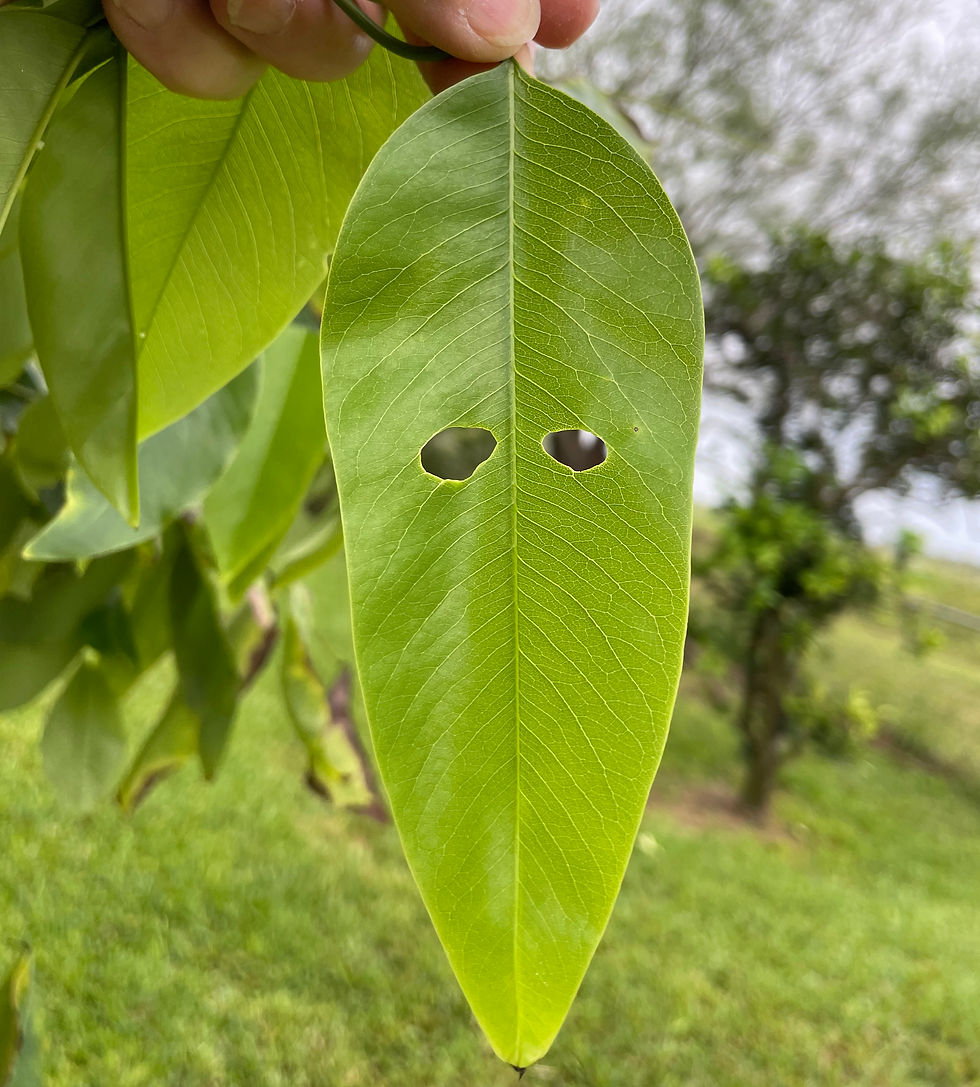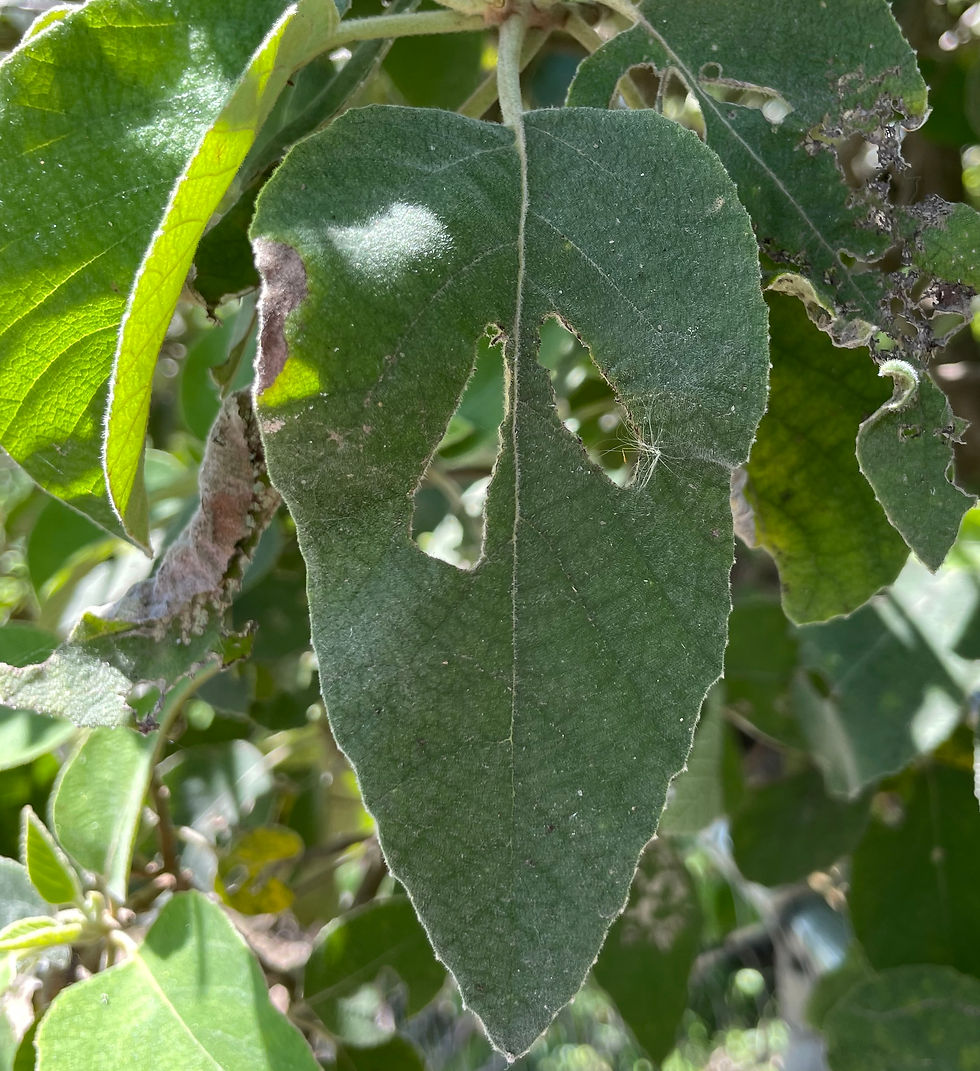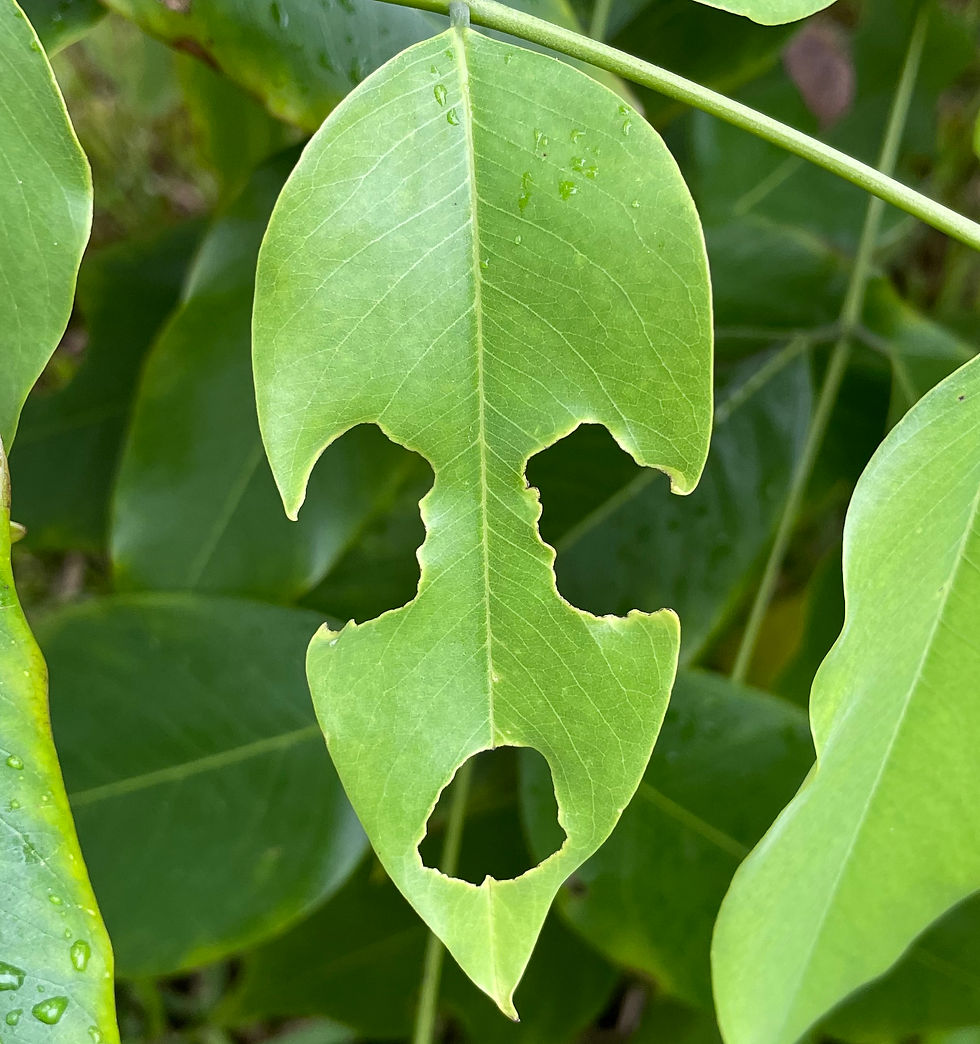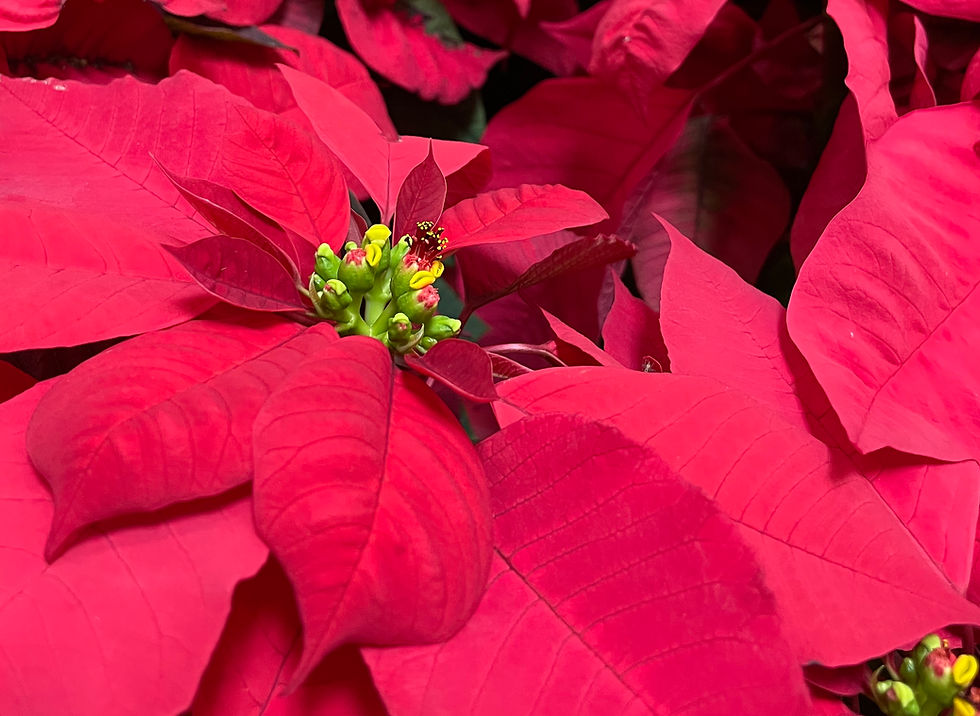Anita’s Blog -- Steeped in Mystery
- jjvanm
- Oct 24, 2021
- 4 min read
Updated: Oct 25, 2021
The October 2021 Texas Pollinator BioBlitz was fun, but such a close look at insects and plants presented some mysteries. The first was what sort of caterpillar covers itself in a web and then disappears leaving only the shell-like web and no trace as to where it went? I’ve got photos to prove the caterpillars existed but no answer as to what happened to them.


A couple of blogs back I was extolling the nectar virtues of our Valley frostweed (Verbesina microptera), so those were my go-to plants the first day of the bioblitz. I found two caterpillars on the leaves of two adjacent frostweed plants. The caterpillars seemed to have appeared overnight because I’d already been checking the progress of blooming plants prior to the bioblitz. Both caterpillars were covered with what appeared to be a web. Great chunks of leaves had been eaten, presumably by the caterpillars. I uploaded photos to iNaturalist and had five possible identification suggestions; however, none of the larvae of the suggested species matched the specific yellow, black and white markings on the caterpillars on my plants. The ID suggestions were queen butterfly, white-tipped black moth, ailanthus webworm, saucy beauty moth and banded cucumber beetle.
I was prepared to check the caterpillars each day to see if they developed different appearances that might eventually help with identification. And what a surprise I had on the third day when the caterpillars were gone, leaving only the fine webbing still nearly intact on the two leaves.


I’d once found a giant leopard moth cocoon enclosed in a web and was told it isn’t that unusual -- a sort of extra protection while the moth was ready to form a cocoon; the webbing wasn’t so much of a mystery.
The caterpillars and what happened to them remain a mystery. They were about an inch long in what I had suspected at the time was possibly their first instar. What I took to be the head area of the cat, was an orange color; the tail seemed to have two little horns -- and that could be the reverse as I had not seen either caterpillar on the move. I have been unable to find that V. microptera is a host to any particular butterfly or moth. If anyone has the solution to this particular mystery, please offer it.
Another mystery is why would a blooming shrub be active one day and then abandoned? A healthy, fully-blooming scorpion’s tail (Heliotropium angiospermum) was active with Western honeybees, brown longtail butterflies, little yellows, a great southern white, Southern skipperlings and tropical checkered-skipper butterflies in a timeframe of about 20 minutes one morning near the beginning of the bioblitz. Since then, although I’d checked the same plant every day, and at different times of the day, I found no other visitors -- like, does the nectar run out? I’ve been told, no, flowers keep producing nectar as long as the flowers are open. So why was the heliotrope abandoned?

Paraphrasing a conversation with a local nurseryman a couple of years ago, it might just be a case of something better comes along. For instance, if you only have one flowering plant, butterflies will use it. If another plant begins blooming, that might, for some reason, be a stronger draw, butterflies will nectar from the new source and ignore what earlier seemed to be a favorite. Perhaps that theory is true. Just days into the bioblitz, the crucita (Chromolaena odorata) began blooming -- a reputed butterfly magnet in Valley butterfly gardens; the longtails and skippers, as well as other butterfly species congregated on the crucita flowers. Last year my goat’s foot tree (Bauhinia Mexicana) was a huge draw for butterflies, flies, hummingbirds and wasps. This year, it hardly saw any activity.
I’d introduced two plants in one of my butterfly gardens this year. One was Mexican oregano (Lippia graveolens), highly touted as an important nectar plant. I found a place for it adjacent to a three-year old hairy wedelia (Wedelia acapulcensis); several heliotropes and crucita shrubs are close by. The other new addition was Southern Seaside Goldenrod (Solidago sempervirens) that began blooming on October 1. In years past, during the October butterfly event, the most active flowers were crucita. This year, the goldenrod has presented some competition while the Mexican oregano and heliotrope have been completely ignored. Close by, the goat’s foot tree sat abandoned, the beautiful, orchid-like blooms left bobbing in the wind.
Another example, honeybees supposedly flock to frostweed. In one part of my yard, they do. In another area, several stands of blooming frostweed are next to a Berlandier’s fiddlewood (Citharexylum berlandieri), also in full bloom. The fiddlewood was not only laden with blooms, it was heavily active with Western honeybees while the frostweed was ignored by the bees. Whatever the butterflies and other pollinators decide, the October pollinator garden is an aesthetic expanse of violet, yellow, white, red and orange.
Still more conundrums presented themselves. Two mysterious objects that looked to be cemented onto the bricks at the back of the house caught my attention. Photos uploaded to iNaturalist presented suggestions of a yellow-legged mud-dauber wasp nest or perhaps the cocoon of one of the silkmoths. Certainly something to keep tabs on.


The fickleness of pollinators and other nature mysteries aside, it’s nearly Hallowe’en. Check out these nature-made Hallowe'en masks -- or perhaps they are a glimpse of nature’s sense of humor reminding us to mask up!









